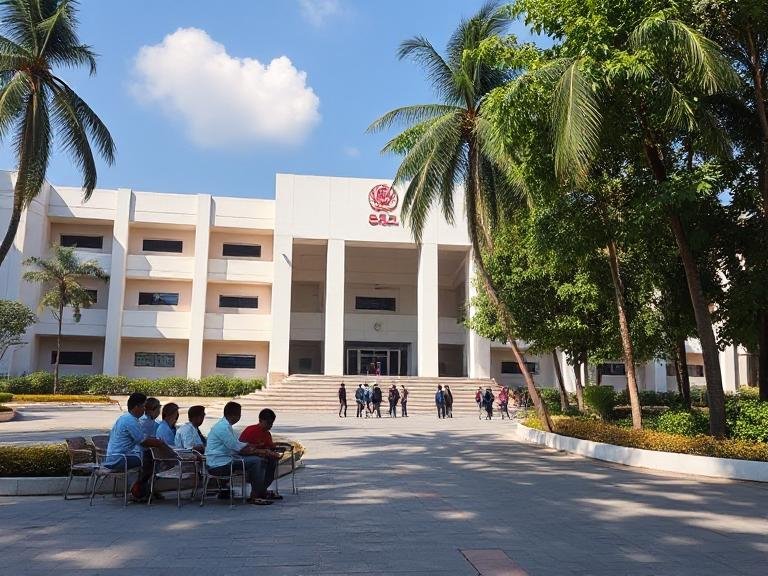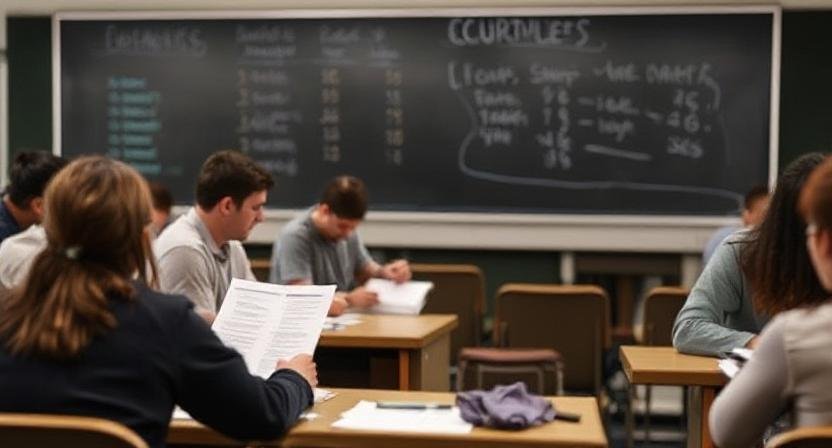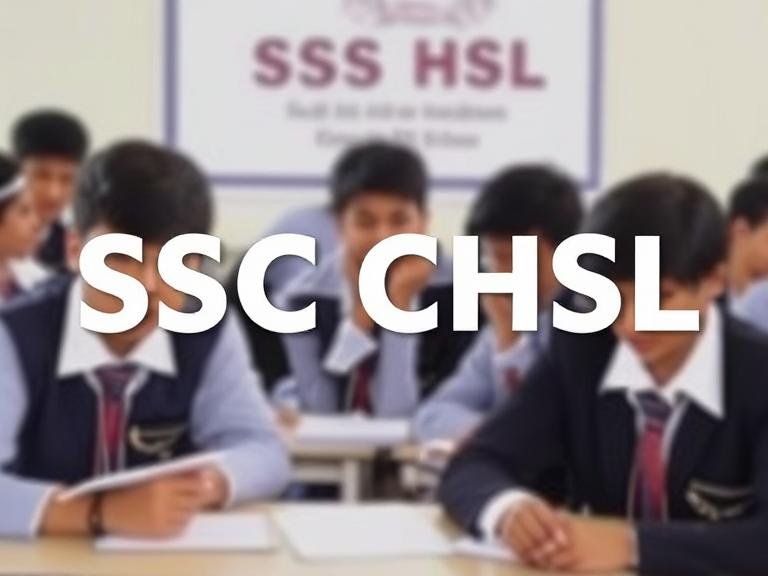SSC MTS 2025: The Ultimate Guide – Syllabus, Pattern, Eligibility, Tips & More
The SSC Multi-Tasking Staff (MTS) 2025 examination is one of the most sought-after government jobs for those who have cleared 10th grade. It offers opportunities in various departments, ensuring job security, steady pay, and perks. To perform well, you need clarity on the new exam pattern, detailed syllabus, eligibility, cut-offs, and smart preparation strategies.
Table of Contents
-
What is SSC MTS & Posts Covered
-
Important Updates for SSC MTS 2025
-
Eligibility Criteria & Age Limit
-
Application Process & Key Dates
-
SSC MTS 2025 Exam Pattern – Paper-1 & Sessions
-
SSC MTS Syllabus – Subject-Wise Topics
-
Negative Marking, Language & Region Details
-
Cut-Off Trends & Previous Year Analysis
-
Preparation Strategy: Best Books, Schedule, Tips
-
Job Profile, Salary & Growth Prospects
-
FAQs: Common Questions Answered
-
Final Tips & Motivation
1. What is SSC MTS & Posts Covered
SSC MTS stands for Staff Selection Commission Multi-Tasking Staff. It’s a central government recruitment exam for Group C posts in ministries, departments, and offices. Posts include:
-
Multi-Tasking Staff (MTS)
-
Havaldar (in CBIC & CBN)
These roles are non-technical, often requiring just a Class 10 certificate as educational eligibility. The Havaldar post includes additional physical requirements.
2. Important Updates for SSC MTS 2025
-
Application period: From 26 June 2025 to 24 July 2025.
-
Exam date (Paper 1 / CBT): 20 September 2025 to 24 October 2025.
-
Correction window for applications: revised as per notification.
-
Admit card release: to be checked on SSC official website, before exam.
3. Eligibility Criteria & Age Limit
| Eligibility Parameter | Details for SSC MTS 2025 |
|---|---|
| Educational Qualification | Passed 10th grade / High School (Class X) from a recognized board. |
| Age Limit | Minimum age 18 years. Maximum: 25 years for MTS post. For Havaldar, up to 27 years. Relaxations for reserved categories apply. |
| Nationality | Indian citizen (or as per SSC norms for specific cases). Official notification clarifies. |
4. Application Process & Key Dates
-
How to Apply:
-
Visit SSC official portal (ssc.gov.in) and register via One-Time Registration (OTR).
-
Fill in form, upload photo & signature, select post (MTS / Havaldar) and apply online.
-
Pay fee (₹100 for UR/OBC, often exempted for women, SC/ST/PwBD etc.).
-
-
Key Dates:
-
Application starts: 26 June 2025.
-
Last date to apply: 24 July 2025.
-
Exam window for CBT: 20 September to 24 October 2025.
-
-
Correction Window: Last few days in July for corrections.
5. SSC MTS 2025 Exam Pattern – Paper-1 & Sessions
The SSC MTS Paper-1 is now revised. Understanding the two-session format is essential.
| Session | Sections / Subjects | Number of Questions | Marks | Duration | Negative Marking |
|---|---|---|---|---|---|
| Session I | Numerical & Mathematical Ability (20 Q) Reasoning Ability & Problem-Solving (20 Q) | 40 | 120 | 45 minutes | No negative marking |
| Session II | General Awareness (25 Q) English Language & Comprehension (25 Q) | 50 | 150 | 45 minutes | 1 mark deduction per wrong answer |
-
Total Questions: 90
-
Total Marks: 270
-
Total Duration: 90 minutes (45 min for each session)
-
Language: The exam is conducted in English, Hindi, and 13 regional languages for certain sessions / sections.
-
Physical Efficiency / Standard Test (PET / PST): Only for Havaldar posts. Qualifying only.
-
Physical Standards for Havaldar:
-
Walking Test: Males – 1.6 km in 15 minutes; Females – 1 km in 20 minutes.
-
Height, chest, etc. specified in notification. Height: approx. 157.5 cm for males, 152 cm for females (with relaxations) etc.
-
6. SSC MTS Syllabus – Subject-Wise Topics
Here are the detailed topics you should cover under each section.
| Section | Topics to Cover |
|---|---|
| Numerical & Mathematical Ability | Integers & Whole Numbers; Fractions & Decimals; LCM & HCF; Percentage; Ratio & Proportion; Average; Time & Work; Profit & Loss; Discount; Simple Interest; Geometry (Area, Perimeter); Graphs & Data Interpretation; Square Roots; maybe basis of BODMAS etc. |
| Reasoning Ability & Problem-Solving | Coding-Decoding; Series (Number/Alphabet/Alphanumeric); Analogy; Direction Sense; Non-Verbal Reasoning; Similarities & Differences; Calendars & Clocks; Pattern Recognition; Word Problems (basic logic) etc. |
| General Awareness | Current Affairs; General Science; History; Geography; Indian Polity & Constitution; Culture; Economics (basic); Environment; Awards & Honors; Important Days & Dates. |
| English Language & Comprehension | Reading Comprehension; Vocabulary (Synonyms, Antonyms); Grammar (Tenses, Prepositions, Articles, Subject-Verb Agreement); Spellings; Phrases & Idioms; Fill in the Blanks; Sentence Completion. |
7. Negative Marking, Language & Region Details
-
Negative Marking: No negative marking in Session I. Session II has –1 mark per wrong answer.
-
Examination Languages: English, Hindi, and 13 regional languages for certain sessions or subject parts (especially Session I and General Awareness sections).
-
Scribe / Extra Time: Candidates eligible for scribes (PwBD etc.) get extra time (often 60 minutes per session instead of 45) where allowed.
8. Cut-Off Trends & Previous Year Analysis
-
Cut-offs vary by category (UR / OBC / OTHERS). For SSC MTS 2025, expect competitive cut-offs due to large number of applicants.
-
Common pattern: Section-wise scoring is important. Session-I acts like qualifying; performance there qualifies for considering Session II scores.
-
Earlier years show that scoring well in English & General Awareness (Session II) helps if you keep Session I perfect (no negative marking) and high accuracy.
-
Monitor the notification for final cut-off marks once declared for your category.
9. Preparation Strategy: Best Books, Schedule, Tips
Books & Resources
-
R.S. Aggarwal / Arihant books for Quantitative Aptitude & Reasoning
-
Lucent’s General Knowledge for Static GK
-
Wren & Martin for Grammar / English usage
-
Daily newspapers / GK magazines for Current Affairs
-
SSC MTS previous year papers & mock test series (online)
Study Plan (Over 8-10 Weeks Suggested)
| Week | Focus Areas |
|---|---|
| Weeks 1-2 | Complete basic mathematics topics, strengthen arithmetic concepts; start vocabulary & grammar |
| Weeks 3-4 | Reasoning topics: practice non-verbal reasoning, series, analogies; daily one reading comprehension |
| Weeks 5-6 | General Awareness: current affairs & static GK; integrate with mocks for sessions I & II |
| Weeks 7-8 | Revision of weak topics; focus on speed + accuracy; full mock tests; error analysis |
| Week 9-10 | Practice under timed condition; revise formulas, grammar rules, GK facts; mental preparation |
Tips
-
Session I first: Since no negative marking, maximize attempts there. Wrong answers don’t penalize in Session I, so attempt confidently.
-
Time Management: 45 mins per session; practice completing questions in time.
-
Accuracy in Session II is vital because of negative marking. Better to leave a question blank than guess blindly.
-
Regular mocks & review: After each mock test, maintain an error log. Re-learn difficult questions.
-
Language practice: Improve reading comprehension, vocabulary, grammar.
-
General Awareness: Stay updated — read newspapers, use monthly current affairs capsules, apps, etc.
10. Job Profile, Salary & Growth Prospects
-
Job Roles: Tasks may include non-technical clerical work, supporting offices, handling errands, record keeping, housekeeping etc., depending on department. For Havaldar, duties also include inspection, security, regulatory functions under CBIC/CBN.
-
Salary: According to SSC pay scales. Usually starting in lower pay bands; combined with allowances etc. Approx ₹18,000 to ₹22,000 per month for many posts (varies by location and department).
-
Growth: Opportunities for promotion, transfers, incremental benefits as per government norms. Stability + pension + perks are added advantages.
11. FAQs: Common Questions Answered
Q1. How many attempts are allowed for SSC MTS?
There is no fixed limit on attempts; candidates can apply as many times as they are within the age limit and meet eligibility.
Q2. Is there negative marking in SSC MTS 2025?
Yes — only in Session II (General Awareness & English). Session I has no negative marking.
Q3. What is the qualification required for SSC MTS?
Class 10 (High School) pass is required. For Havaldar as well, it is same educational qualification plus physical standards.
Q4. What is the physical test for Havaldar post in SSC MTS 2025?
Physical Efficiency Test (PET) and Physical Standard Test (PST) are required only for Havaldar. Examples: walking 1.6 km in 15 min for male, 1 km in 20 min for female; height & chest standards etc.
Q5. How many sections are there in SSC MTS exam and what are they?
There are 4 sections total: Numerical & Mathematical Ability, Reasoning Ability & Problem Solving (Session I), General Awareness, English Language & Comprehension (Session II). All mandatory.
12. Final Tips & Motivation
-
Start preparation as early as possible; even if you have 1-2 months, a focused schedule can yield good results.
-
Do not ignore any section: balancing all four is key.
-
Mock tests simulate exam pressure; use them to build speed & endurance.
-
Maintain health: adequate sleep, short breaks, mental calm. Stress reduces performance.
-
Stay consistent: consistency beats long hours with irregularity.
Conclusion
SSC MTS 2025 is highly competitive but absolutely doable with the right strategy. Understand the revised exam pattern carefully (two sessions, negative marking only in session II), cover all syllabus topics thoroughly, practice mocks, revise well, and manage time and accuracy.





